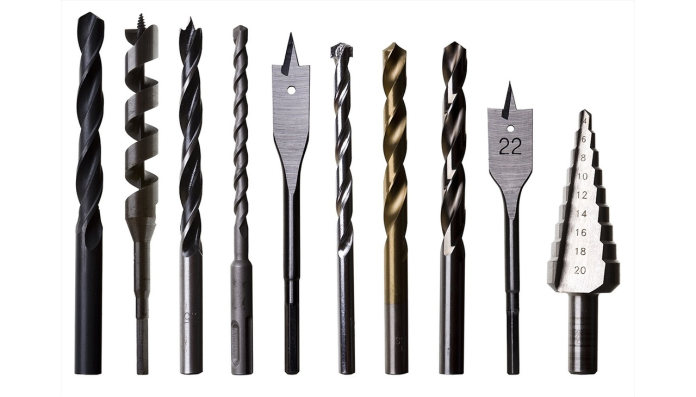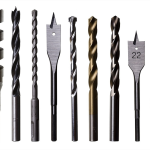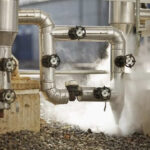A drill bit is a cutting tool used to remove material to create holes, Drill bits come in many sizes and shapes and can create different kinds of holes in various materials. They attach to a drill, which powers them to cut through the workpiece, typically by rotation. we will discuss types of drill bits and their size in different fields according to use.
Types of Drill Bits
- Twist Drill Bits: Commonly used for general-purpose drilling in metal, wood, and plastic.
- Spade Bits: Ideal for woodworking, creating large, flat-bottomed holes.
- Forstner Bits: Used in woodworking for precise, clean holes.
- Masonry Bits: Designed for drilling into concrete, brick, and stone.
- Cobalt Drill Bits: Excellent for heavy-duty drilling in stainless steel and other hard materials.
- Carbide-Tipped Bits: Known for their durability and used for intense drilling tasks.
- Step Drill Bits: Used for drilling multiple-sized holes with one bit.
- Auger Bits: For deep woodworking and soft materials.
- Glass and Tile Bits: Specialized for cutting through glass and tile.
- Each type has a unique design and material compatibility.
Sizing of Drill Bits
Dill bits measure in Imperial (inches) and Metric (millimeters) sizing systems. size depends on our requirements for the hole, we can also make custom drill sizes according to material and hole diameter.
Selecting the Right Drill Bit
Understanding the project requirements (hole size, depth, precision). Match the drill bit material to the workpiece (e.g., wood, metal, concrete).
Maintenance and Safety Tips
Keep your drill bit sharp before drilling and must check the safety gear of the drill machine to avoid accidents.
Drill Bits for Woodworking
Drill bits specifically designed for wood are crucial in woodworking for their ability to create clean, precise holes without damaging the material. Here’s an overview of the types of drill bits used for wood, their characteristics, and best uses:
- Twist Drill Bits
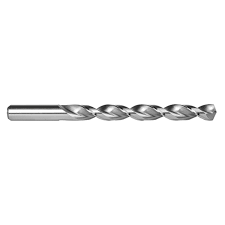
- Description: These are the most common types of drill bits. They have a cylindrical shank and a spiral groove (flute).
- Best For General drilling purposes in wood, as well as metal and plastic.
- Sizes: Available in a wide range of sizes.
- Special Features: Some have a brad point tip for extra precision in wood.
- Brad Point Drill Bits:
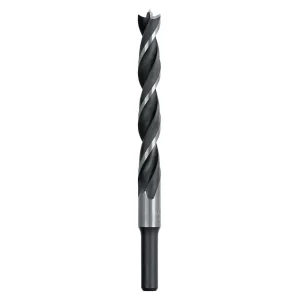
- Description: These bits have a pointed tip and spurs on each side, designed to keep the bit centered and produce clean entry and exit holes.
- Best For: Precision drilling, especially where a clean, straight hole is needed.
- Sizes: Available in various sizes, typically measured in millimeters or inches.
- Spade Bits (Paddle Bits)
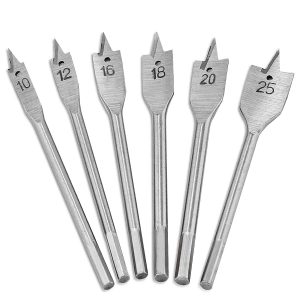
- Description: Featuring a flat, paddle-like shape with a sharp point in the center and a flat cutting surface.
- Best For: Drilling large holes quickly in wood. Not as precise as other types, but efficient for rough work.
- Sizes: Commonly range from 6mm to 36mm in diameter.
- Forstner Bits:
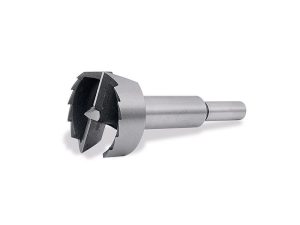
- Description: Characterized by a short, cylindrical cutter around the perimeter and a point in the center.
- Best For: Creating flat-bottomed holes, perfect for woodworking where precision is key.
- Sizes: Wide range, often larger than typical twist or brad point bits.
- Auger Bits

- Description: Long, spiral-shaped bits with a screw tip that pulls the bit into the wood.
- Best For: Boring deep, precise holes in wood. Ideal for rough-in work and framing.
- Sizes: Available in various lengths and diameters.
- Hole Saw Bits:

- Description: A cylindrical bit with teeth around the edge, used with a drill to cut circular holes.
- Best For: Creating large diameter holes for things like door locks, piping, etc.
- Sizes: Ranging from about 14mm to over 150mm in diameter.
Considerations for Wood Drill Bits:
- Material: High-speed steel (HSS), carbon steel, and cobalt are common materials for wood drill bits.
- Sharpness: Keeping wood drill bits sharp is crucial for clean cuts and efficient drilling.
- Speed: Using the correct speed on your drill can prevent burning and ensure a clean hole.
- Pre-Drilling: For hardwoods, pre-drilling a pilot hole can prevent splitting.
Conclusion
Selecting the right drill bit for woodworking depends on the type of wood, the size and depth of the hole, and the level of precision needed. Each type of wood drill bit offers unique benefits, whether it’s for rough framing work or fine cabinet making. Proper care and maintenance, such as regular sharpening and appropriate storage, will extend the life of these tools.
Drill Bit For Metal Working
Drill bits designed for metalworking are specialized to handle the hardness and toughness of various metals. Using the right drill bit is crucial for efficient drilling and to avoid damage to both the bit and the workpiece. Here’s an overview of the types of drill bits used for metal, their characteristics, and best uses:
- High-Speed Steel (HSS) Drill Bits
- Description: Made from high-speed steel, these bits can handle the heat generated by drilling metals.
- Best For: Drilling most types of metals, including steel, as well as plastics and wood.
- Durability: Good wear resistance, but not as hard as cobalt or carbide bits.
- Cobalt Drill Bits
- Description: Contain a percentage of cobalt (typically 5% or 8%). The cobalt increases the bit’s hardness and heat resistance.
- Best For: Drilling hard metals such as stainless steel and titanium.
- Durability: More durable and heat-resistant than HSS bits.
- Carbide-Tipped Drill Bits
- Description: Feature a carbide tip fused to a steel body. Carbide is extremely hard and can maintain a sharp edge longer than HSS or cobalt.
- Best For: Drilling very hard metals and for high-production applications.
- Durability: High, but carbide is brittle and can chip under rough handling.
- Titanium-Coated Drill Bits
- Description: HSS bits coated with titanium nitride (TiN), giving them a distinctive gold color.
- Best For Prolonged Drilling in standard metals; the coating reduces friction and increases bit life.
- Durability: Longer life than standard HSS bits but less than cobalt or carbide bits.
- Step Drill Bits
- Description: Conical-shaped bits with a series of stepped diameters.
- Best For: Drilling holes in thin metals where multiple hole sizes are needed with one bit.
- Durability: Often made from HSS or with a titanium coating.
- Center and Spotting Drill Bits
- Description: Short, stiff bits with a less aggressive cutting angle.
- Best For: Creating a divot in metal to guide the tip of a larger drill bit.
Considerations for Metal Drill Bits
- Material Hardness: The hardness of the metal determines the type of drill bit needed.
- Lubrication: Using cutting fluid or oil can help reduce heat and prolong the life of the drill bit.
- Speed and Pressure: Slower speeds and steady pressure are generally better for drilling metals.
- Sharpening: Keeping bits sharp is crucial; dull bits can generate excessive heat and cause damage.
Conclusion
Choosing the right drill bit for metalworking involves considering the type of metal, the precision required, and the durability of the bit. High-speed steel bits are sufficient for most general metal drilling tasks, while cobalt and carbide-tipped bits are better suited for harder metals. Proper technique, including the use of appropriate speeds, lubrication, and gradual pressure, is crucial for successful metal drilling and extending the life of the drill bits.
Drill Bits For Civil Working
In civil engineering and construction, drill bits are used for various applications, ranging from creating holes in concrete and masonry to drilling into metal for structural purposes. The choice of drill bit depends on the material being drilled and the specific requirements of the task. Here’s an overview of the types of drill bits commonly used in civil work:
- Masonry Drill Bits
- Description: Designed with a tungsten carbide tip to withstand the abrasiveness of concrete, brick, stone, and other masonry materials.
- Best For: Drilling holes for anchor bolts, wall plugs, and concrete fixings.
- Use With: Often used with a hammer drill, which provides a hammering action to aid in drilling into tough masonry.
- SDS and SDS-Max Drill Bits
- Description: ‘SDS’ stands for Slotted Drive System. These bits have grooves that fit into a special chuck for hammer drills.
- Best For: Heavy-duty drilling in concrete, stone, and other tough materials. SDS-Max is for larger-scale applications.
- Special Features: Enhanced hammering action from the drill and stronger build for larger holes and more demanding work.
- Auger Bits
- Description: Long, spiral-shaped bits with a screw tip. Not to be confused with wood auger bits.
- Best For: Used in soil and soft rock for environmental sampling and geotechnical testing.
- Sizes: Available in various lengths and diameters.
- Core Drill Bits
- Description: A cylindrical bit with a hollow center, used with a core drill for extracting a sample of the material.
- Best For: Creating large diameter holes in concrete and masonry for utilities, pipework, and structural analysis.
- Sizes: Ranging widely in diameter, suitable for different sizes of core extractions.
- High-Speed Steel (HSS) Drill Bits
- Description: Made from high-speed steel, suitable for various materials.
- Best For: Drilling metal components in civil construction, such as steel rebar or structural steel elements.
- Durability: Suitable for high temperatures generated during metal drilling.
- Diamond-Tipped Drill Bits
- Description: Bits with industrial diamonds embedded in the cutting edge.
- Best For: Extremely hard materials, such as reinforced concrete or very hard natural stones.
Considerations for Civil Work Drill Bits
- Material Compatibility: The choice of a bit depends heavily on the material – concrete, metal, stone, etc.
- Drill Type Compatibility: Some bits require specific types of drills, like hammer drills or rotary hammers.
- Durability and Wear Resistance: Civil work often involves tough materials, so bits need to be durable and wear-resistant.
- Safety and Efficiency: Proper technique, appropriate speed, and using the right bit for the material can improve both safety and efficiency.
Conclusion
Selecting the appropriate drill bit for civil work is crucial for the efficiency and safety of construction projects. Masonry bits, SDS bits, and core drill bits are vital for working with concrete and other hard materials. For metal elements, HSS bits are commonly used. Each bit is designed for specific materials and tasks, and using the correct bit not only makes the job easier but also prolongs the life of the bit and the safety of the workers.


